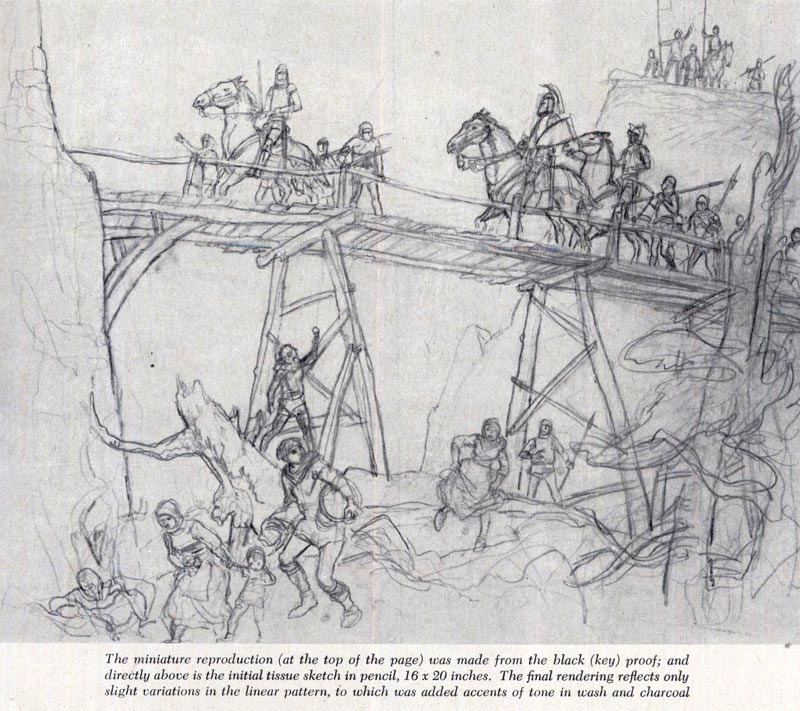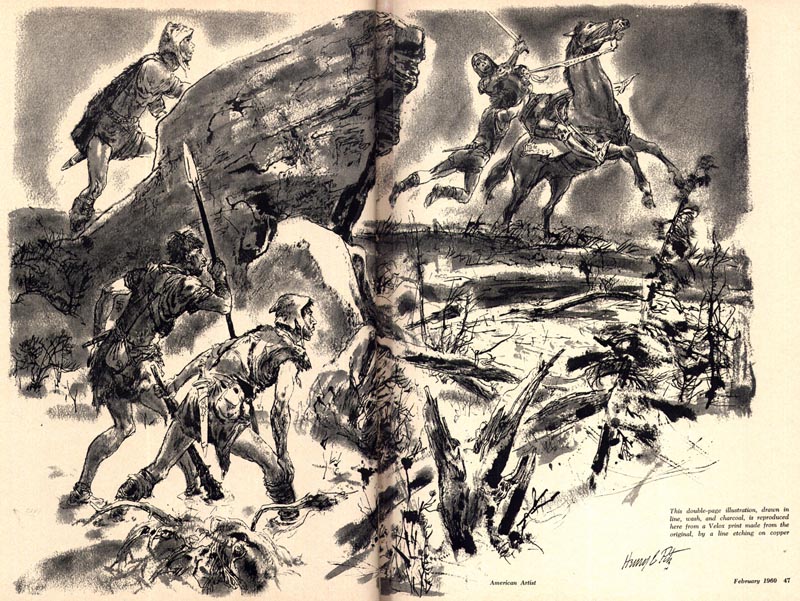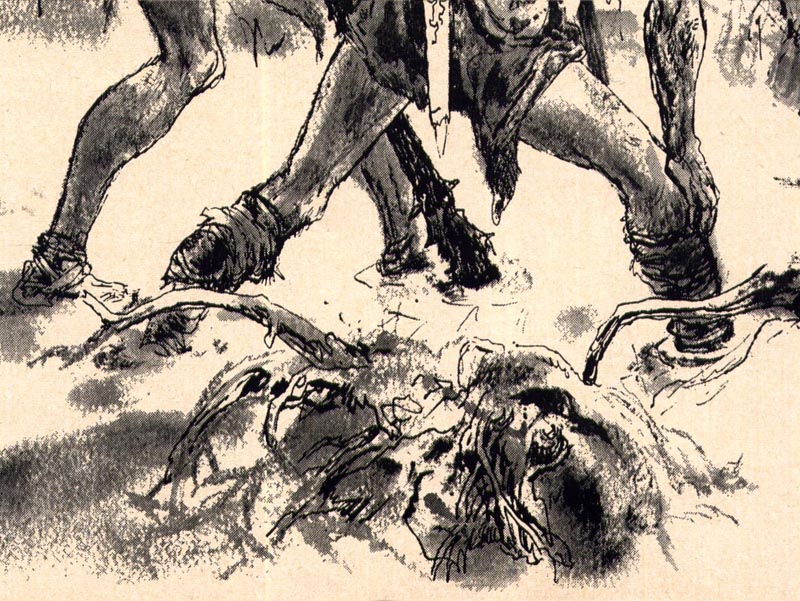
When William Caxton Jr. wrote about Pitz in the Summer 1957 issue of American Artist, he talked about how Pitz had a passion for drawing. "For every drawing which has been commissioned and subsequently published - and there have been hundreds," wrote Caxton, "he has made thousands more."

"From his student days and right down to the present," wrote Caxton, "Henry Pitz has developed an amazing facility as a draughstman."
"He has worked on every surface of paper and utilized charcoal, pen, brush and ink, pencil, crayon and pastel, exploring them all."

"Many of the latter are preliminaries for illustration compositions..."

"... others are what he calls warm-up exercises, and these fill sheets and traverse everything from the human figure to animals, trees, architecture, to incidental studies, from real things to imaginary day-dreamings."

Caxton explained that early on in his career Henry Pitz had as a goal to illustrate books. "His first opportunity came in 1921," wrote William Caxton, and "during the ensuing thirty-five years Henry Pitz has illustrated more than 175 books - an average of five a year!"

"Many of these were executed in ink technique but a goodly number are in color. They range in subject from historical fiction of many periods to imaginative illustration for poetry to real life stories. Always characterized by a penetrating interpretation, the illustrations by Pitz are further vitalized by an engaging freshness, resultant from an ease of execution."

Unfortunately, because this week slipped away from me, I wasn't able to give Henry C. pitz the full treatment he deserves... but we will revisit his work on another occasion. For now, I like this conclusion to his biography on askart.com, written by his widow, Mary "Molly" Wheeler Wood Pitz, who tells us Pitz "was working on a painting the day before he died in his eighty first year, November 26, 1976, revered and beloved by his many friends and family."

* Hopefully next week I'll be settled into a routine and we can get back to a daily schedule!
* For now, be sure to visit Charlie Allen's Blog for the second-to-last CAWS, according to what Charlie tells me.
* Also, a new post is up at Storyboard Central showcasing the work of a legendary duo of Toronto marker renderers who had a studio called "Sphere".
* And finally, be sure to take a look at my post on Drawn! about the impending auction of autographed children's books, sketchbooks, and hand-drawn mock-ups by Evaline Ness, who was featured here recently during a week on female illustrators of the 1950's.
* My Henry C. Pitz Flickr set.
I have not seen this guy before. I am a medical illustrator at Diem Design in Minneapolis ( http://www.diemdesign.com/medical/diem_medical.html ) I spend all day doing commercially viable illustration. It is good to see illustration that is for hire, not student work or self indulgent stuff.
ReplyDeleteI'm a fan of Henry Pitz and have two of his books, Illustrating Children's Books and Ink Drawing Techniques. Came across your blog when I was searching on Pitz. If you don't mind, I would like to link to your blog and flickr set on Henry Pitz from my blog, The Art of Children's Picture Books. Full credit will be given to you.
ReplyDeleteJil; please feel free to link to the blog and my Flickr :^)
ReplyDeleteThanks!
ReplyDeleteHi, I am doing an assessment for a University Paper at the moment on the book 'Bandoola' which features Pitz's illustrations. I was browsing the internet trying to find information about his technique and I stumbled across this blog. I can't seem to find access to any of his books - even through my University Database! I was wondering if you knew anything about what technique he uses? How his illustrations are printed or reproduced in books etc? I would be so grateful! Now, off to read the rest of your blog!
ReplyDeleteThis comment has been removed by the author.
ReplyDelete